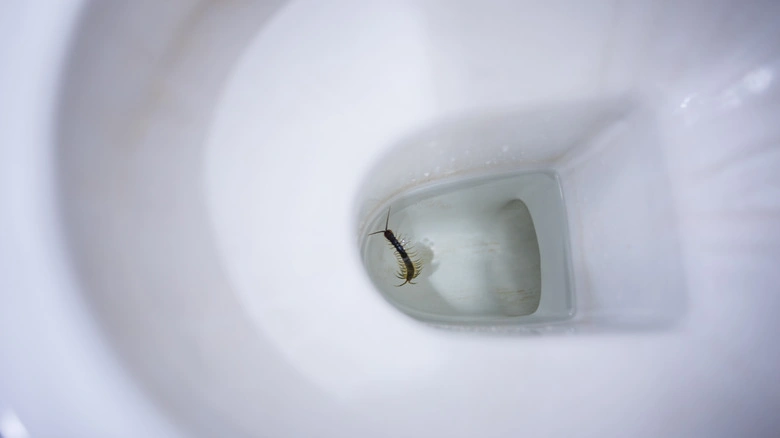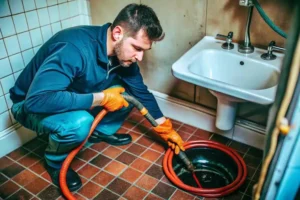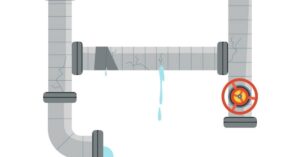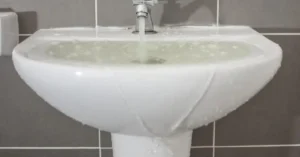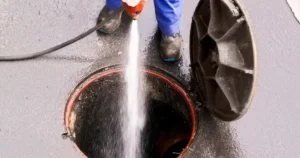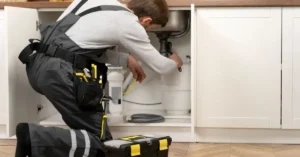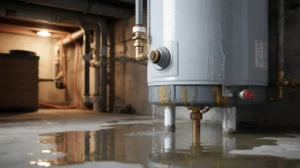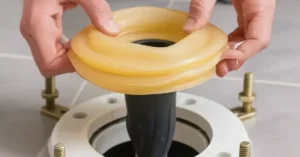Seeing a worm in toilet bowl is unsettling. It’s an unpleasant surprise that makes you question your home’s cleanliness. The most important thing to know is that these little creatures are not a sign of a personal health issue, but they do point to a plumbing or hygiene problem that needs fast attention.
This issue is common, and you can solve it easily with the right steps. This guide will help you understand what causes these worms, how to get rid of them safely, and how to stop them from coming back. We focus on real-world advice to make your toilet bowl clean and pest-free again.
What Causes Worms in Your Toilet Bowl
Understanding the root cause helps you fix the problem permanently. These creatures don’t just appear randomly. They need specific conditions to survive and thrive in your toilet.
Moisture and Standing Water
Bathrooms provide the perfect environment for many organisms. High humidity levels attract certain species. Water that sits too long in pipes creates breeding grounds. Toilets used infrequently become especially vulnerable.
Drain and Sewer Line Issues
Worms in toilet water often come from your plumbing system. Cracked pipes allow them to enter. Damaged sewer lines create pathways from outside. Tree roots breaking through pipes bring soil-dwelling species inside.
Poor Ventilation
Bathrooms without proper airflow trap moisture. This creates ideal conditions for larvae development. Insects lay eggs in damp areas. Those eggs hatch into what looks like small worms in toilet bowl areas.
Organic Matter Buildup
Biofilm and waste residue in pipes attract various organisms. These deposits provide food sources. They also create surfaces where eggs can attach. Regular cleaning prevents this buildup.
Common Types of Worms in Toilet Bowl
Not all creatures you find are actual worms. Identifying them correctly helps you choose the right removal method.
Drain Fly Larvae
These are the most common culprits. They look like tiny black worms with fuzzy bodies. Drain flies lay eggs in the slime inside pipes. The larvae feed on organic matter. They appear as black toilet worms wiggling in your bowl.
Bloodworms
These bright red creatures are midge fly larvae. They thrive in water with low oxygen. Their red color comes from hemoglobin. Finding them suggests stagnant water problems in your plumbing.
Earthworms
Real earthworms occasionally enter through broken sewer lines. Heavy rain floods their soil habitat. They seek higher ground and enter through pipe cracks. These are larger than other types of worms you might find.
Horsehair Worms
These long, thin organisms resemble dark hair strands. They’re parasites that live inside insects. When their host dies near water, they emerge. Getting rid of horsehair worms requires addressing the insect population.
Flatworms (Planaria)
These small, flat creatures have triangular heads. They feed on bacteria and organic debris. Clean water sources usually keep them away. Their presence indicates excessive organic matter.
How to Identify What You're Dealing With
Proper identification leads to effective treatment. Here’s how to tell them apart.
Size and Color
Drain fly larvae: 4-5mm long, dark gray or black Bloodworms: 10-15mm, bright red Earthworms: 5-10cm, brown or pink Horsehair worms: 10-30cm, dark brown or black Flatworms: 3-10mm, brown or gray
Movement Patterns
Drain fly larvae wiggle slowly and stick to surfaces. Bloodworms move in S-shaped patterns. Earthworms contract and expand their bodies. Horsehair worms twist and coil constantly.
Location
Finding worms in the toilet water suggests they came through pipes. Creatures on the rim or floor likely came from drains or flew in. Check other bathroom fixtures for similar infestations.
How to Get Rid of Worms in Toilet Bowl
Effective removal combines immediate action with long-term prevention. Follow these steps for complete elimination.
Immediate Removal
Flush the toilet multiple times to remove visible organisms. Use a toilet brush to dislodge any clinging to surfaces. Pour a bucket of hot water down the bowl. This helps clear the trap.
Deep Cleaning Treatment
Mix one cup of bleach with one gallon of water. Pour this solution around the toilet bowl rim. Let it sit for 30 minutes. Scrub thoroughly with a brush. Flush several times. This kills larvae and removes biofilm.
Drain Treatment
Pour boiling water down all bathroom drains weekly. Follow with a mixture of baking soda and vinegar. Use a ratio of one cup baking soda to one cup vinegar. Let it foam for 15 minutes. Rinse with hot water.
Enzyme Cleaners
These products break down organic matter in pipes. They’re safer than harsh chemicals. Apply according to package directions. Use monthly to prevent buildup. They work well for worms in toilet prevention.
Professional Drain Cleaning
Persistent problems need professional attention. Plumbers use specialized tools to clean pipes. Hydro-jetting removes stubborn biofilm. Video inspection finds hidden cracks or damage.
Natural Remedies and DIY Solutions
Some homeowners prefer chemical-free approaches. These methods work for minor infestations.
Salt and Baking Soda Method
Mix equal parts salt and baking soda. Pour two cups down the toilet and drain. Add boiling water after 30 minutes. The abrasive mixture scrubs away organic deposits. Repeat weekly for prevention.
Vinegar and Dish Soap
Combine one cup white vinegar with two tablespoons of dish soap. Pour into the toilet bowl and drain. The soap breaks surface tension. Vinegar dissolves mineral deposits and biofilm.
Diatomaceous Earth
This natural powder kills insects and larvae. Sprinkle it around drains and under the toilet base. It damages their exoskeletons. Replace after cleaning. Keep it dry for maximum effectiveness.
How to Prevent Future Worm Infestations
Prevention saves time and eliminates recurring problems. These habits keep your bathroom pest-free.
Regular Cleaning Schedule
Clean toilets weekly with disinfectant. Scrub under the rim thoroughly. Pour hot water down all drains bi-weekly. This prevents organic buildup that attracts pests.
Improve Ventilation
Run exhaust fans during and after showers. Open windows when weather permits. Reduce humidity levels below 50%. Install a dehumidifier if needed.
Fix Plumbing Issues
Repair leaky pipes immediately. Seal cracks around toilet bases. Check for water damage under floors. Address these problems before they worsen.
Use Toilet Regularly
Flush unused toilets weekly. This prevents water from becoming stagnant. Moving water doesn’t support larvae development. Consider running water in guest bathrooms.
Install Drain Screens
Metal or plastic screens catch debris and prevent clogs. They also stop larger organisms from entering. Clean screens weekly during regular maintenance.
Maintain Proper Water Levels
Check that your toilet trap maintains correct water levels. Low water allows sewer gases and creatures to enter. Adjust the float if needed.
When to Call a Professional
Some situations require expert intervention. Don’t hesitate to seek help when needed.
Persistent Infestations
If worms return after repeated treatments, underlying issues exist. Professional plumbers diagnose hidden problems. They access areas homeowners cannot reach safely.
Sewer Line Problems
Multiple drains showing infestations suggest main line issues. Tree root intrusion requires professional equipment. Camera inspections reveal the exact problem location.
Structural Damage
Cracks in pipes or foundations need immediate repair. Water damage spreads quickly. Professional assessment prevents costly future repairs.
Health Concerns
Large infestations pose sanitation risks. Professionals handle severe cases safely. They use appropriate protective equipment and disposal methods.
Understanding Your Plumbing System
Knowledge about your home’s plumbing helps prevent problems. Basic understanding makes you a more informed homeowner.
How Toilet Traps Work
The curved pipe under your toilet holds water constantly. This water barrier blocks sewer gases. It also prevents creatures from easily entering. Maintaining proper water levels keeps this barrier effective.
Vent System Importance
Plumbing vents allow air into drain pipes. This helps water flow smoothly. Blocked vents create suction that pulls organisms up. Ensure vents remain clear of debris.
Main Sewer Connection
Your home connects to municipal sewers or septic systems. Problems in these lines affect all fixtures. Understanding this connection helps identify widespread issues.
Signs of Bigger Plumbing Problems
Sometimes worms indicate serious underlying issues. Watch for these warning signs.
Multiple Fixtures Affected
Finding worms in your toilet and other drains suggests main line problems. Don’t ignore widespread infestations. They indicate system-wide issues.
Slow Drains
Water backing up combines with pest problems often. Clogs create perfect conditions for infestations. Address drainage issues promptly.
Foul Odors
Sewer smells indicate broken seals or damaged pipes. These same openings allow organisms to enter. Professional inspection finds the source.
Water Damage
Stains on ceilings or walls near bathrooms suggest leaks. Hidden moisture creates breeding grounds. Investigate thoroughly before cosmetic repairs.
You can read about: How to Get Rid of Springtails in Bathroom
Conclusion
Discovering a worm in toilet bowl situations feels disturbing but isn’t uncommon. Most cases result from preventable plumbing or cleanliness issues. Regular maintenance keeps your bathroom sanitary and pest-free. Clean drains weekly, maintain proper ventilation, and address leaks immediately.
Taking action quickly prevents small problems from becoming major infestations. Use the methods outlined in this guide for effective results. Remember that persistent issues need professional attention. If you’re in the Los Angeles area and need expert help, Derks Plumbing provides reliable solutions. Our team handles everything from minor repairs to complete Toilet Installation in Eagle Rock and surrounding areas.
Your bathroom should be a clean, comfortable space. Don’t let unwanted visitors compromise your home’s hygiene. Stay vigilant with maintenance and act quickly when problems arise.
FAQs
Can worms in toilets make you sick?
Most species found in toilets don’t directly harm humans. They indicate unsanitary conditions that could harbor harmful bacteria. Clean and disinfect thoroughly after discovering them. Wash hands carefully after bathroom cleaning tasks.
Why do I keep finding worms in the toilet?
Recurring infestations point to ongoing moisture problems or damaged pipes. Check for leaks, improve ventilation, and clean drains regularly. Consider professional inspection if problems persist despite your efforts.
Are drain fly larvae harmful?
These larvae don’t bite or spread disease directly. They thrive in unsanitary conditions that could harbor harmful microorganisms. Their presence indicates needed cleaning and maintenance.
How do worms get into upstairs toilets?
They travel through plumbing pipes from ground level or enter through roof vents. Drain flies can also lay eggs in upstairs bathroom drains. Height doesn’t protect against infestations if conditions are right.
What kills worms in drains permanently?
Regular cleaning with hot water and enzyme cleaners prevents infestations. Eliminate moisture sources and organic buildup. Fix any pipe damage that allows entry from outside sources.

